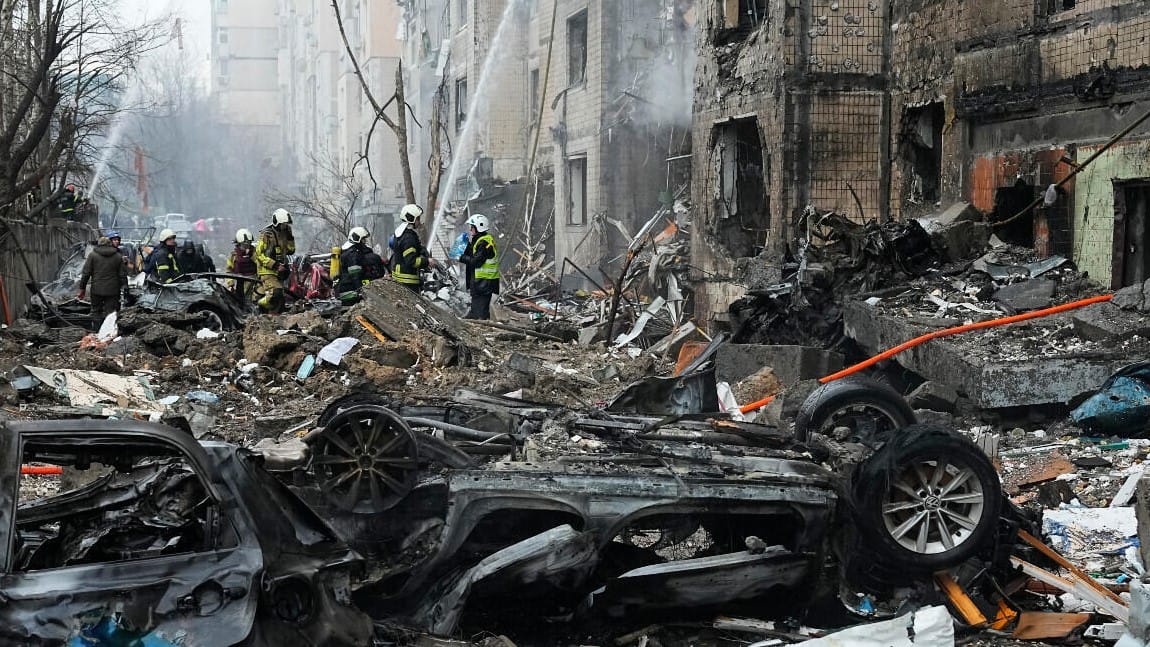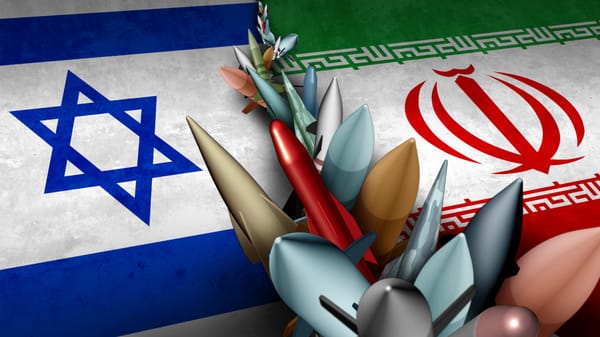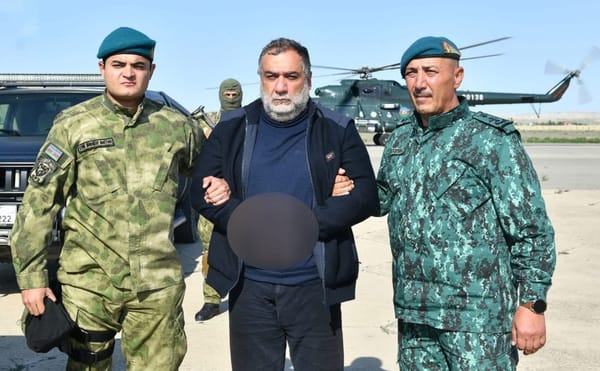Black Day and Its Aftermath: The Results of a Three-Year Conflict

How the Initial Shock and Hope for a Swift Regime Collapse Gave Way to a Protracted War, Devastation, and Exhaustion. Is There Any Chance for a “Bad Peace” in This Prolonged Confrontation?
Three years ago, the world witnessed the largest war in Europe since the mid-20th century. Everyone remembers the initial days of panic and the hope for a rapid end, as well as the surge in anti-war sentiment. Yet reality proved far more complex. Western arms supplies failed to guarantee Ukraine’s victory, and Russia, despite plunging into a full-scale military campaign, managed to maintain its economic and political stability. Why has a crisis that many once believed was doomed to a quick collapse of the Kremlin dragged on? How has Russian society come to understand the war and its price? And might a “bad peace” be preferable to endless losses?
The Shock of the Beginning: Kiev Was Bombed...
On the night of February 24, 2022, fear and chaos gripped Moscow and other Russian cities. People rushed to ATMs, stockpiled essential goods, and scrambled to book flights abroad. Spontaneous anti-war protests led to thousands of detentions. In response, the State Duma swiftly passed new laws to harshly punish dissent. Many believed this upheaval was a precursor to the imminent collapse of the regime.
Yet the authorities soon regained control. The protests were suppressed, and a relative stabilization followed, even as thousands fled the country. The anticipated economic collapse never materialized, and the repressive state apparatus proved effective in quelling dissent. The dismal queues for food and medicine gradually dissipated. What began as an initial shock evolved into the stark realization that society cannot easily topple a regime.
The Illusion of Spring 2022: Ukraine’s Victory = Putin’s Fall
During the spring and summer of 2022, many in the Russian opposition confidently anticipated the regime’s collapse, convinced that the Ukrainian military’s success would trigger a swift political implosion in Moscow. The slogan “Victory for Ukraine! Freedom for Russia!” resonated strongly among numerous émigré communities. There were even missed opportunities for negotiations—plans that might have led to a ceasefire by February 23, before new territories were annexed and massive destruction ensued.
As participants now admit, that period was marked by excessive optimism: Western sanctions were expected to “crush” the Russian economy, and Ukraine’s armed forces were presumed capable of “destroying” the Kremlin’s military might. Instead, a long, bloody war ensued, with casualties numbering in the hundreds of thousands. The notion that Moscow’s defeat would automatically usher in democracy in Russia failed to account for geopolitical realities and the limited scope of Western aid.
Confronting Reality: It Is Not Morality but the Balance of Power That Matters
From a military standpoint, victory is not achieved by moral righteousness but by a decisive advantage in resources and will. Russia, armed with its nuclear arsenal, remains a formidable adversary. The United States and Europe have consistently avoided direct military confrontation, opting instead for “measured” aid to Ukraine. Consequently, neither side has been able to secure an unequivocal win. Russia continues its exhausting campaign, leveling Ukrainian infrastructure and cities, while Ukraine suffers heavy losses and remains dependent on external support that is still limited.
The American administration intended to use Ukraine’s resistance to weaken Putin, but it never spoke of completely crushing the Russian state. The balance of power means that a nuclear superpower cannot be punished in the same way as, say, Iraq in 1991. For the United States and its allies, the risk of provoking a full-scale conflict with a nuclear Moscow is simply too high for drastic measures.
Debunking Three Myths: Allies, the Iron Curtain, and Imminent Collapse
Within the opposition, three ideas persisted for a long time. First, that Ukraine supposedly had powerful allies ready to fully defend it. In reality, the West offers no formal guarantees, providing only moderate arms supplies. Second, that Russia could be swiftly isolated behind an “iron curtain.” Yet, Russia remains integrated into global capitalism, supplying energy, and although its economy has been weakened by sanctions, it has not collapsed. Third, that the Putin regime is on the verge of collapse, much like the USSR once did. However, Western elites, fearing chaos in a nuclear-armed country, are not inclined toward a sudden disintegration of Russia.
In short, Russia’s economy has remained afloat, the “iron curtain” has never fallen, and the West is uninterested in the complete collapse of the Kremlin. Consequently, neither complete isolation nor an immediate regime change has occurred.
What’s Next: a Ceasefire or the Continuation of an Exhausting Standoff?
By mid-2023, it became clear that the conflict had reached an impasse and that Ukraine lacked the resources to secure an outright victory. This is precisely why Donald Trump, when he campaigned for the presidency, promised to “settle” the conflict quickly, effectively pressuring Kyiv into a ceasefire on unfavorable terms. His plan was based on a realistic doctrine (sometimes referred to as the “Mirshheimer Doctrine”), which presumes that great powers can carve out zones of influence. Yet even if such a ceasefire is achieved, it would be far from lasting: the mutual grievances and the damage inflicted on Ukraine are simply too profound.
Ultimately, three years of war have shown that Ukraine managed to defend its independence—albeit at a tremendous cost. Russia, despite its reputational collapse, has maintained its state structure. External actors have been reluctant to take radical measures against a nuclear-armed nation. Once again, the balance of power has prevailed over moral considerations or notions of “just punishment.”
This raises a perennial question: wouldn’t it be more rational to end the bloodshed? And do the leaders possess the willingness to accept a “bad peace”? Calls to revert to the pre-1991 territorial status or to wait for a complete collapse of the Kremlin would only lead to further casualties. Yet neither a dramatic breakthrough on the battlefield nor decisive pressure on the Kremlin is in sight, and the aggressive war continues to deny the promised benefits to Russia.
Conclusions: Public Discontent and the Price of War for Russia
Over the course of these three years, it has become evident that the war has not evolved into a “new Great Patriotic War” for Russians. The public is forced to spend money and lose loved ones, while prices soar and quality of life declines. The ideological justification for the “special operation” has faded, and people see neither grand goals nor an imminent triumph. The Kremlin finds it increasingly difficult to justify why the conflict continues, yet it cannot simply abandon the fight since there is no clear “victory” to declare.
- The Initial Shock subsided as protests were suppressed and the regime maintained its grip.
- Hopes for a Quick Russian Capitulation through military defeat did not
- The Real Logic is that a nuclear state cannot be dismantled by sanctions and weaponry without risking a global catastrophe.
- The Three Myths Debunked: Ukraine does not have absolute allies, Russia cannot be isolated by an iron curtain, and Putin’s regime is not on the brink of collapse.
- The Final Dilemma: The pressure on Moscow is insufficient to force its surrender, while Ukraine lacks the decisive advantage. Cynical calls for negotiations sound hollow in the face of a prolonged conflict.
In summary, the three-year war has shown that while Ukraine has managed to defend its sovereignty, it has come at an enormous cost. Russia, despite its reputational failure, has retained its state structure. External powers have been too cautious to take radical action against a nuclear superpower. Ultimately, the balance of power has dictated the outcome—not morality or notions of “just punishment.”
Public discontent has grown, as the war exacts a heavy toll on Russia. The state’s spending increases, living standards fall, and the ideological justification for the “special operation” is eroded. The Kremlin’s inability to provide a clear, decisive victory only deepens the rift between the government and its people.





